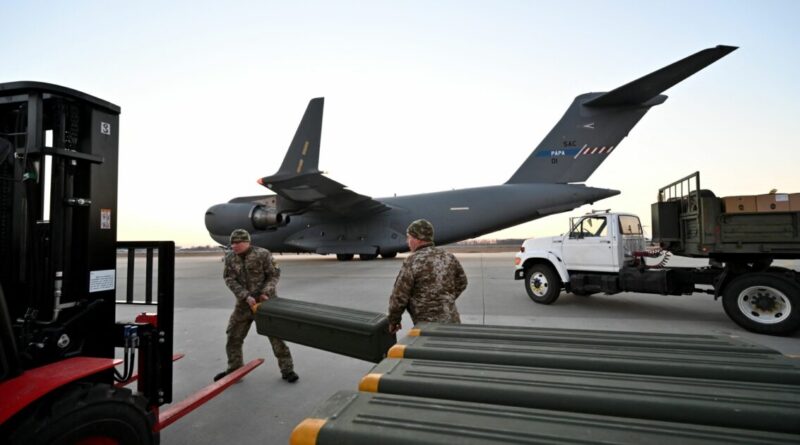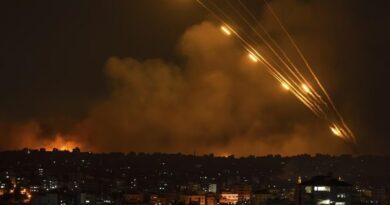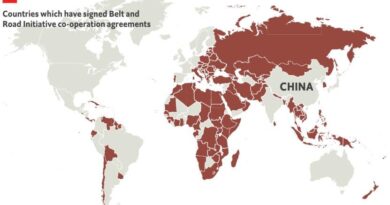The data that shows who is winning the Ukrainian war two years later
PASCUAL SERRANO
Two years after the start of the Ukrainian war, we will hear all kinds of versions about who is winning the war. Some will say that Ukraine is winning because Russia has not fulfilled its dream of taking kyiv in a few weeks, as it intended at the beginning. Others will say that it is Russia that, little by little, is triumphing because Western sanctions have proven useless, military support from the United States is running out and the advances on the front in recent months are from the Russian army in the face of a Ukrainian counteroffensive. that showed itself to be a failure. But I will be the one to tell you who is really winning the war: the arms industry.
Since the start of the Ukrainian war, the stock market index of the defense industry (mainly from the United States, the European Union and the United Kingdom) has risen 24,5%, double the global average of listed companies.
World military spending was 2023% higher in 9 than the previous year, reaching a value of 2,2 trillion dollars, a new record on an already ascending path, according to data published by the International Institute for Strategic Studies on the eve of the Munich Security Conference. This is a figure higher than the GDP of a country like Italy. Everything indicates that it will continue to grow.
The war in Ukraine has been the perfect justification for triggering European military spending, which they so resisted in the face of NATO pressures. In 2014, European NATO allies spent $235.000 billion, 1,47% of GDP. In 2023, the figure rose to 347.000, equivalent to 1,85% of GDP. By 2024, 380.000 and 2% are expected, respectively, according to data published by the Atlantic Alliance.
The Munich Security Conference was a parade of leaders calling for more guns, more ammunition and, of course, more money for the companies that make them. From Josep Borrell, to the German Chancellor, Olaf Scholz, or the President of the European Commission, Ursula von der Leyen.
If a few years ago, announcing an increase in Defense spending was unpopular, in fact in Spain it is usually done hidden in other budget sections, now European leaders make a big deal out of the money they spend on weapons. “I am proud to say that this year we will spend 2% of GDP on defense,” declared German Defense Minister Boris Pistorius, referring to a threshold that is required by NATO. “But I am realistic enough to see that this might not be enough in years to come,” he added. All this while his economy remains in recession due to the end of the cheap energy supplied by Russia.
"We have to spend more, we have to spend better, we have to spend European.” Those were the words that the president of the European Commission (EC), Ursula von der Leyen, used in an interview in The Financial Times to announce the new strategy and its spending intentions in the arms industry. The most insulting thing is that the “need” for spending on weapons has been presented with the same need for spending on vaccines in the pandemic or on gas to look for an alternative (of course more expensive) to Russian energy. “We did it with vaccines and gas”.
The result, therefore, of the two years of war and the new defense policies is business and money for arms companies.
Currently, The United States concentrates the largest number of military contractors and also great references for the market. However, it is European companies that have risen the most on the stock market in these two years, according to the D indexow Jones, which includes European defense and aerospace companies, tripled American companies in two years of war in Ukraine, which rose 22%.
In terms of revenue and profits, this will also translate into a drastic increase for the next few years. Already in 2023, gross operating profit (ebitda) increased by 15% on average among large companies in the sector. And in the current year, EBITDA is expected to increase by 23% on average, according to the consensusor market data collected by FactSet in what will be the biggest jump in the next three years (the increase in profits expected in 2025 would be 14% year-on-year). And in terms of cash flows, increases of more than 20% are also expected for the next three years. The company best valued by the marketcado is the German company Rheinmetall, which designs and manufactures vehicles such as the Panther KF51 tank. In these two years of war its shares have risen more than 300%.
The arms companies themselves already contemplate an improvement in their income statements, even until 2030 if geopolitical tension remains at current levels.
At current prices, the American companies Lockheed Martin and Boeing are the ones that offer the greatest distances ahead, according to market consensus collected by ElEconomista. Lockhed Martin, which derives more than 80% of its revenue from the defense branch, is 15% off its target price in the 4$81,6. The company's flagship product is the F-35, which also sells outside the United States. “International demand for F-35s has been increasing since the outbreak of the Ukrainian war and the rest of the geopolitical tensions,” explains Bloomberg analyst Will Lee.
This year already began with the news that several countries of the European Union (Spain, Germany, the Netherlands and Romania) agreed buy through NATO up to 1.000 Patriot missiles from COMLOG, a firm that is 50% owned respectively by Raytheon and MBDA Germany. The first is the American firm that manufactures the missiles, and the second, MBDA Germany, is a subsidiary of the arms group MBDA, conformed by three leading European companies in the aerospace and defense sector: Airbus (37,5%), BAE Systems (37,5%) and Leonardo (25%). He contract is valued at 5.041 million euros, according to EFE.
Joe Biden made it very clear when he asked Congress for money for weapons in Ukraine. These were his words: “We send equipment to Ukraine that is in our arsenals. And when we use the money approved by Congress, we use it to replenish our own reserves, our arsenals, with new equipment. Equipment that defends the United States and is made in the United States.” And he added “Patriot missiles for anti-aircraft batteries made in Arizona; artillery munitions manufactured in 12 states across the country [including] Pennsylvania, Ohio, Texas.”
US Secretary of State Antony Blinken revealed that About 90% of US funds intended for military aid to Ukraine actually stayed in the US and were sent to its military-industrial complex.. He repeated that same information again on February 20 US State Department spokesman, Matthew Miller, at a press conference: "When it comes to our security assistance to Ukraine, 90 percent of that money is actually spent here in the United States. Benefits American manufacturing. “It benefits American technological development.”
The conclusion leaves no room for doubt, the war in Ukraine first, and that in Gaza later, has proven to be the great alibi to drag the world, and especially Western countries, into the consumption of weapons. The psychosis sown among the citizens of a Putin who wants to invade Lisbon, or of a crisis in the Middle East that destabilizes the world, has made the traditionally sensible citizens, who did not accept increasing their military expenses, end up approving them. They did it a few decades ago with the psychosis of terrorism and now with military threats.
Who would have told us that, four years after a pandemic, the lesson that the rulers took note of was that more public funds had to be dedicated to weapons instead of healthcare.













